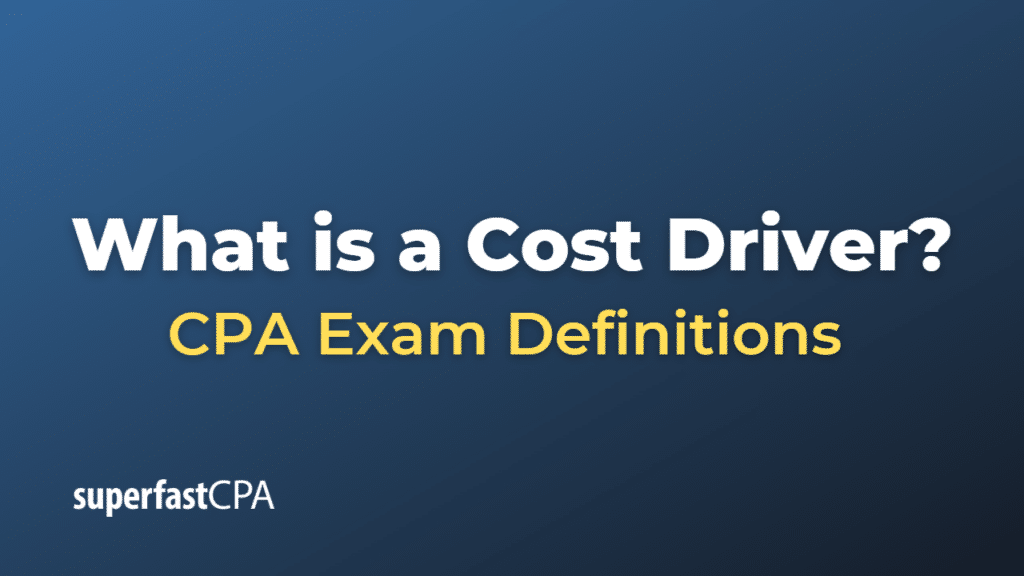Cost Driver
A cost driver is a factor or activity that has a direct impact on the costs incurred by an organization. It is the primary cause of a cost and serves as the basis for allocating overhead costs to products, services, or other cost objects. Cost drivers help organizations understand the relationship between costs and activities, enabling them to better manage expenses, improve efficiency, and make informed decisions about resource allocation.
Cost drivers can be classified into two main categories:
- Volume-based cost drivers: These drivers are related to the volume of production or the number of units produced. Examples of volume-based cost drivers include labor hours, machine hours, or the number of units produced. As the volume of production increases, the costs associated with these drivers also increase proportionally.
- Activity-based cost drivers: These drivers are related to specific activities or processes within an organization. Examples of activity-based cost drivers include the number of purchase orders, the number of inspections, or the number of customer support calls. Activity-based cost drivers help organizations better understand the cost behavior of different processes and make more informed decisions about process improvements and resource allocation.
In cost accounting, cost drivers are often used in activity-based costing (ABC) to allocate overhead costs more accurately. By identifying the specific activities that drive costs and allocating costs based on the actual consumption of these activities, organizations can achieve a more accurate understanding of their cost structure and make better-informed decisions about pricing, product mix, and process improvements.
Example of a Cost Driver
Let’s consider a fictional manufacturing company, “GadgetPro Corp.,” that makes electronic gadgets. The company incurs various overhead costs in its production process, including machinery maintenance, quality inspections, and materials handling. GadgetPro uses activity-based costing to allocate these overhead costs more accurately to its products.
- Machinery maintenance: The main cost driver for machinery maintenance is machine hours. The more hours the machines are operating, the more maintenance they require. Let’s say GadgetPro’s machines operated for 2,000 hours in a month, and the maintenance cost for that month was $10,000. Therefore, the cost per machine hour is $5 ($10,000 / 2,000 hours). If a particular product requires 5 machine hours to produce, the maintenance cost allocated to that product would be $25 ($5 x 5 hours).
- Quality inspections: The main cost driver for quality inspections is the number of inspections. If the quality control department conducts 500 inspections in a month at a cost of $5,000, the cost per inspection is $10 ($5,000 / 500 inspections). If a particular product requires 3 inspections, the inspection cost allocated to that product would be $30 ($10 x 3 inspections).
- Materials handling: The main cost driver for materials handling is the number of material moves. If the materials handling department makes 1,000 moves in a month at a cost of $4,000, the cost per move is $4 ($4,000 / 1,000 moves). If a particular product requires 4 material moves, the materials handling cost allocated to that product would be $16 ($4 x 4 moves).
By identifying the specific activities that drive costs and allocating costs based on the actual consumption of these activities, GadgetPro can achieve a more accurate understanding of its cost structure. This can help the company make better-informed decisions about pricing, product mix, and process improvements.













